BY DR. KELLY SHEN
I’ve been away from the lab for a short while, devoting most of my time to raising a little human being. Now that I’m back, I am very excited to be sharing our latest paper with you.
I made sure to keep my scientific skills sharp while on leave.
The reason for my excitement is twofold. First, naturally, is what we present in the paper itself. It’s a study where we tested the ability of diffusion-weighted imaging (DWI) tractography to accurately reconstruct the structural topology of large-scale cortical networks. You can find the details here but, briefly, we reconstructed the macaque connectome from DWI data collected in vivo to connectomes based on previously published tracer data. We didn’t have a good sense of how best to reconstruct connectomes in the macaque. For example, what curvature threshold should we use? Should we be thresholding the connectivity matrices? Should we be using distance correction for whole-brain reconstructions? So we first set out to optimize our reconstruction protocols by systematically varying certain parameters until we got as “accurate” (as determined by area under the ROC curves [AUC]) a DWI-based connectome as possible as compared to the tracer-based connectomes. Not surprisingly, even the best AUC values were not that great, ranging from 0.64-0.75 across 10 animals. When we (and by “we” I mean Alex) instead estimated connectivity by applying a simple distance rule, our model outperformed the DWI-based methods with an average AUC ~0.75. Ouf! It makes one pause and question what one’s doing, doesn’t it?
We then took those optimized DWI-derived connectomes along with the tracer ones and subjected both sets to a range of network metrics to see whether their topologies coincide. It turns out that the DWI-based connectomes are fairly good at representing “connection strength”, or edge weights. They’re also pretty good at representing the community structure of the connectome, such that nodes were assigned to modules in a consistent away across the two data modalities.
Not a bad correspondence between the partitioning of the tracer-based connectomes (left) and the DWI-based ones (right). Each module and their intra-modular connections are denoted by a different colour, with inter-modular connections in grey.
There was even a correlation between the degree centralities computed from each of the data types but -- and this is a big BUT – the identification of hubs using degree, betweenness or participation coefficient measures was extremely poor. Nodes were both misidentified and missed as hubs in the DWI-based connectomes. In very few cases were they actually correctly identified. We replicated all of these results using an independent macaque DWI-based connectome, so we’re fairly confident that these findings were not due to our particular sample, choice of imaging sequences, preprocessing or tractography protocols. This is the point where I paused again, and questioned again.
The way I see it, all’s not lost. DWI-based connectomes are good at representing some aspects of structural topology and not so good with some others. It just means we have to be more careful about our choices and interpretations around network analysis when using connectomes reconstructed from DWI.
So this brings me to the second reason for my excitement. Now that we know that DWI-based estimates of edge weights are fairly reasonable, we can use them to build a large-scale weighted connectome of the macaque. It will be an extension of The Virtual Brain, where the virtualized macaque brain will be available for connectome-based modeling, and a nice complement to the virtual mouse brain. Whole-brain macaque connectomes generated from tracer data already exist but their edge weights are categorical at best, and often nonexistent. By applying the DWI protocols we’ve developed for the macaque brain to the connections we know to exist from tracer studies, we can “enhance” the macaque tracer connectomes by estimating their edge weights. We’ll be able to simulate whole-brain dynamics in the macaque across different imaging modalities (e.g., fMRI, EEG). In conjunction with existing empirical data collected from macaques across different spatial and temporal scales, the virtualized macaque brain will be a solid step forward in our efforts to model structure-function mapping in the whole brain, but also be able to assess it across scales.




